CONTACT (1997)
A scientist finds conclusive radio proof of extraterrestrial intelligence, sending plans for a mysterious machine.
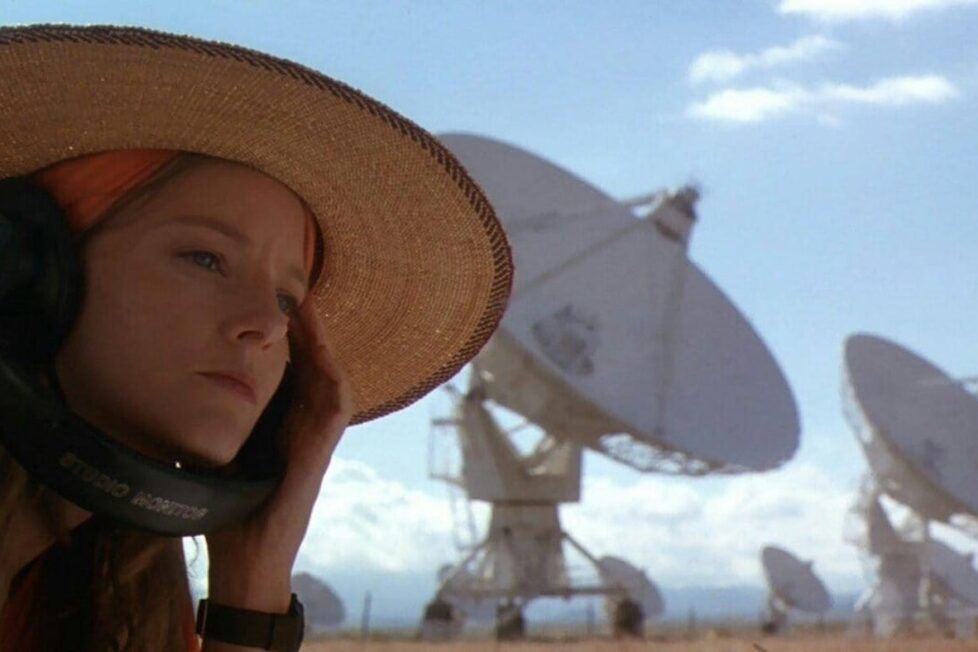
A scientist finds conclusive radio proof of extraterrestrial intelligence, sending plans for a mysterious machine.


I first saw Contact in a dark skies area, where I could see the path of the Milky Way and identify constellations and planets, so I found the film’s opening tour of the universe to be magnificent. In a cutting-edge VFX sequence that still impresses decades later, we zoom away from the din above Earth caused by our television and radio broadcasts, which become sparser until our planet is but a distant small blue dot. We zoom out even further as the radio emissions are left behind, through clouds of stellar gas and thousands of galaxies that look like stars teeming into white light… which then glisten inside a little girl’s iris.
The film began as a screenplay Sagan co-wrote with his wife Ann Dryuan, a talented writer herself who first collaborated with Sagan on his influential 1980 documentary series Cosmos: A Personal Voyage. When plans for adapting Contact for the big screen, the story was instead adapted into a novel published in 1985. It was a best seller. The dream of a filmed version continued to percolate, and after a few false starts James V. Hart and Michael Goldenberg developed a script, following their recent success with Forest Gump (1994), and that movie’s director Robert Zemeckis was brought onboard
The main character, “Ellie” Ann Arroway (Jodie Foster), was based on real-life SETI director Jill Tanser, who invented the term “brown dwarf” for protostars too small for fusion. Much like her fictional counterpart, Tanser was also encouraged to study physics and engineering by her father during the 1960s (when the industry was male-dominated and sexism was more widespread), who sadly passed away when she was 12.
Ellie is the little girl (played by Jena Malone) who blinks in white light from Contact’s opening cosmic zoom. She bonds with her widowed father (David Morse) over their love of the stars and use a ham radio to connect with faraway places like Pensacola, Florida. Tragedy strikes the young Ellie when her father collapses and dies, setting her on an obsessiion to try and discover what’s truly out there.
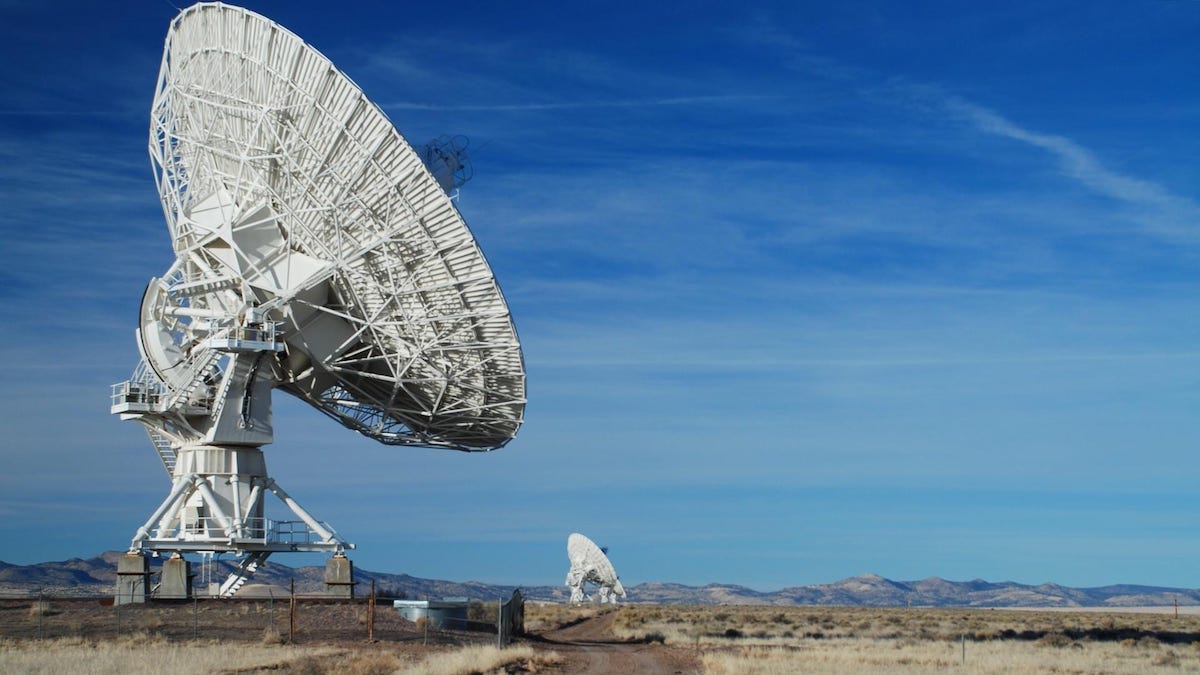
Adult Ellie then arrives at the Arecibo radio telescope to embark on a search for “little green men” with the help of Dr Kent Clark (William Fichtner), based on real-life blind astronomer Kent Cullers, also involved with SETI. Palmer Joss (Matthew McConaughey) is a writer researching the impact of technology on indigenous cultures, who is attracted to Ellie (the feeling is mutual), but he challenges her scientific zeal with a more spiritual approach.
There’s an impressive cast of supporting actors to provide gravitas once Ellie discovers a rhythmic pattern of signals emanating from the Vega system and decodes alien messages to reveal blueprints for a travel machine: National Security agent Michael Kitz (James Woods) is sceptical throughout, Whitehouse aide Rachel Constantine (Angela Bassett) is on Ellie’s side, Ellie’s thunder-stealing boss David Drumlin (Tom Skerritt) takes credit for her work and tells her “unfortunately idealism such as yours cannot succeed in the world”, and enigmatic business tycoon S.R Hadden (John Hurt) tracks Ellie’s progress and supports her as a key player when she needs it most. Jake Busey (The Frighteners) also makes a creepy cameo as an Evangelistic terrorist.
The inclusion of real CNN ‘talking heads’ and spliced footage of then-American President Bill Clinton (lifting moments from his speech about the possibility of a meteorite containing evidence of microbial life from Mars) was an innovation used by Zemeckis after Sydney Poitier turned down an offer to play the President, although it now gives nostalgic documentary-style realism to the film! Invented news footage also gave the chance to explain the science to the audience more clearly.
After much political shenanigans, Ellie takes the journey on behalf of humankind. A fantastic tour through wormholes (“they should have sent a poet”) culminates in an encounter with aliens in a familiar form, who reassure us humans are on the first step to reaching out into a cosmic community. A beautiful experience that’s definitely real to her, but it appears to others like she never left the Earth—although there are 18 hours of scrambled footage on her camera which suggests otherwise…
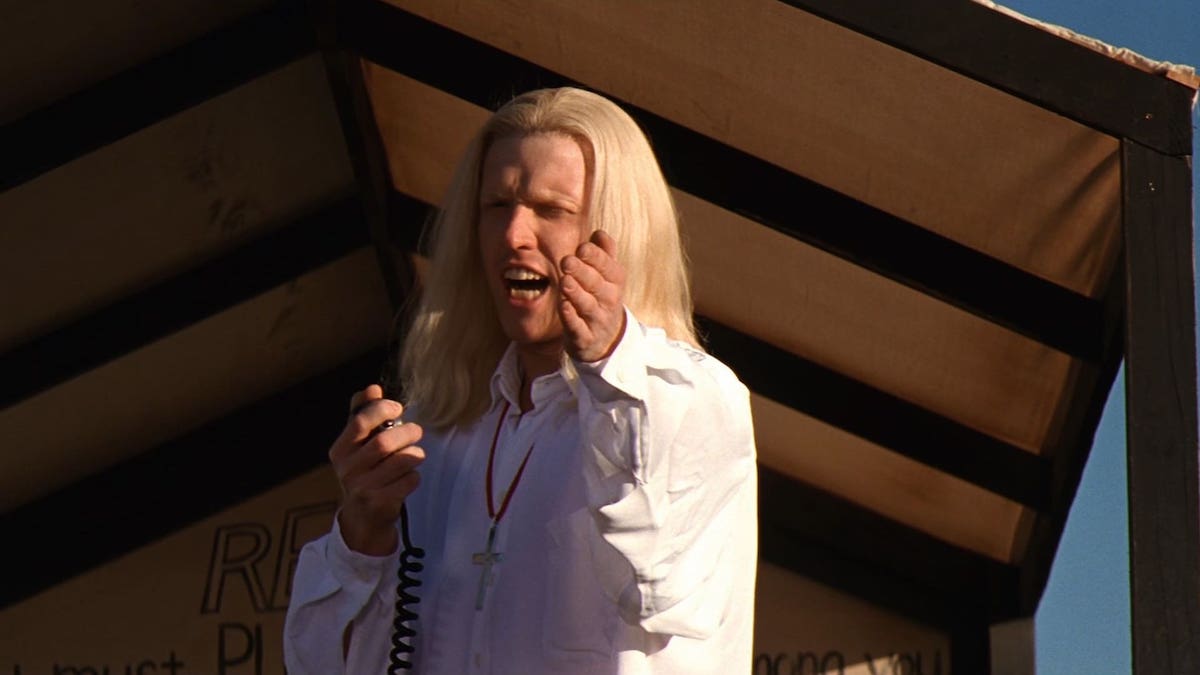
Sagan, although ill, was on hand during filming to organise a special conference on the history of astronomy for the cast and crew (sadly he died before the film’s release in 1997 and the film is dedicated to him). Locations such as the Arecibo radio telescope in Puerto Rico (which was still operational until storm damage destroyed it completely in 2020), The Very Large Array of radio telescopes in New Mexico, and the Kennedy Space Centre in Florida, were used with extra footage added afterwards on sound stage and by CGI. The Virgin Islands and Fiji were also locations used and a clapboard house in Virginia was Ellie’s childhood home.
The innovative VFX were the joint efforts of many studios, but principally Sony Pictures Image works, Industrial Light and Magic, Weta Digital, and even Pixar. Of course, the effects teams were influenced by Stanley Kubrick’s 2001: A Space Odyssey (1968) but came up with innovative portrayals of the cosmos, for example during the wormhole sequences.
Jodie is excellent when portraying Ellie’s single-minded zeal coupled with feminine vulnerability. Visual motifs such as falling stars, Ellie’s drawing of Pensacola as a child, and a painting of a star array pinned on adult Ellie’s wall (painted by famous Cosmos artist Jon Lomberg), subtly add resonance to her personal experience entwined with her first contact. The VFX invite us to buckle up and go along with Ellie for the ride, reassured that Sagan will have ensured solid science was behind the light show. Was it a near-death experience or did it all happen during the fraction of a second (in our time) she wasn’t monitored? An official inquiry is launched.
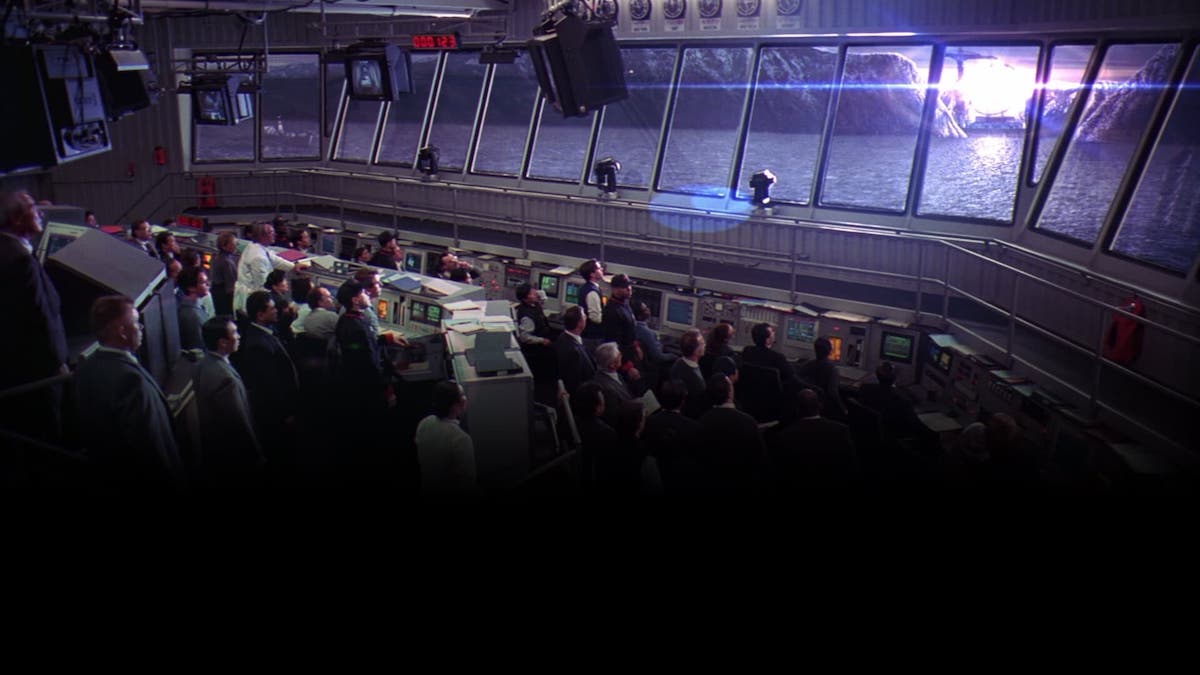
Ellie’s space suit is redolent of a knight’s armour and her later ‘inquisition’ and passionate personal testimony carries resonance with Joan of Arc. In a speech Foster delivers wonderfully, Ellie admits she has no proof of her experience except the truth she feels with every fibre of her being which “changed her forever”, offering proof “we are tiny and insignificant but rare and precious—not alone but part of something greater than ourselves.” When Joss meets her outside the hearing, he helps escorts her through the crowd and attests that science and religion have the same goal—the pursuit of truths—and that he believes her.
Throughout Contact the science versus religion debate is personified by Ellie’s love affair with Palmer Joss, which seems to culminate in the idea that knowledge and spirituality can merge. “For small creatures such as us, the vastness of the universe is only bearable through each other.”
After her public humiliation after testiftying about her trip, Ellie returns to the Very Large Array of radio telescopes to pursue the alien’s breadcrumb trail and tells youngsters on a school trip the same thing her father once told her when she asked if there was any other intelligent life out there: “the universe is a pretty big place. If it’s just us, seems like an awful waste of space.”
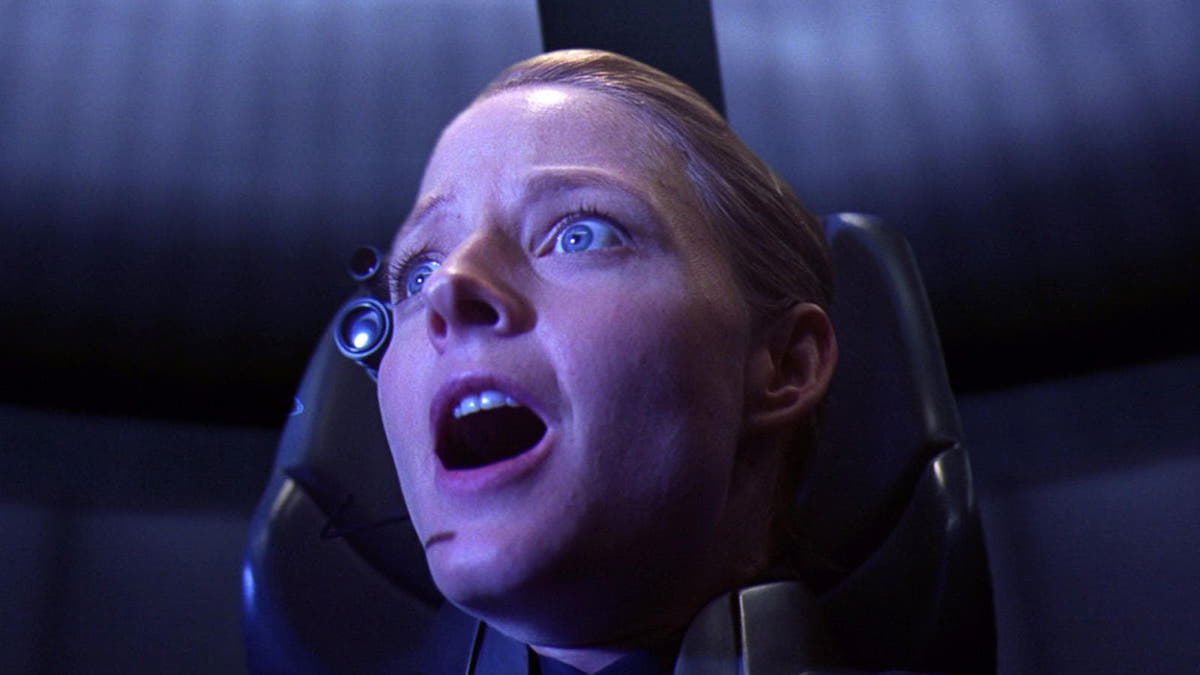
The film was released in July 1997 and was a box office success, although it received mixed reviews. The Hollywood Reporter was scathing on its “pompous exposition” which fell between audiences, although Roger Ebert considered it the most thoughtful film on aliens since Close Encounters of The Third Kind (1977).
It was nominated for but failed to win many Academy Awards, although it did win Hugo Awards for director and writers, and a Jupiter Award for Foster. The film’s release prompted revived interest in Sagan’s novel, which returned to the bestseller lists.
Contact’s impact continued to grow after its release. Ebert added it to his Great Movies collection in 2011, calling it a brave film. The University of Florida used it in a Physics 101 course in 2006 as its science was “pretty good, the wormhole stuff spot on”. However, the departure from the novel which meant only one person takes the trip has been criticised as science would rarely settle for a single point of data in such a huge undertaking!
The film influenced Christopher Nolan’s Interstellar (2014), which also starred Matthew McConaughey, and in some ways paved the way for Arrival (2016)–where female linguistic expert Louise Banks (Amy Adams) makes first contact with aliens in a different context and scale.
Ann Dryuan developed a second Cosmos series in 2014, this time hosted by Neil de Grasse Tyson, which continues to spread the legacy of Carl Sagan and inspire new generations.
Contact may have turned 25 years old, but its themes are just as relevant today. The pacing may seem slow to modern audiences, and the character development is a bit clunky at times, but it’s a story grounded in scientific fact and better for that.
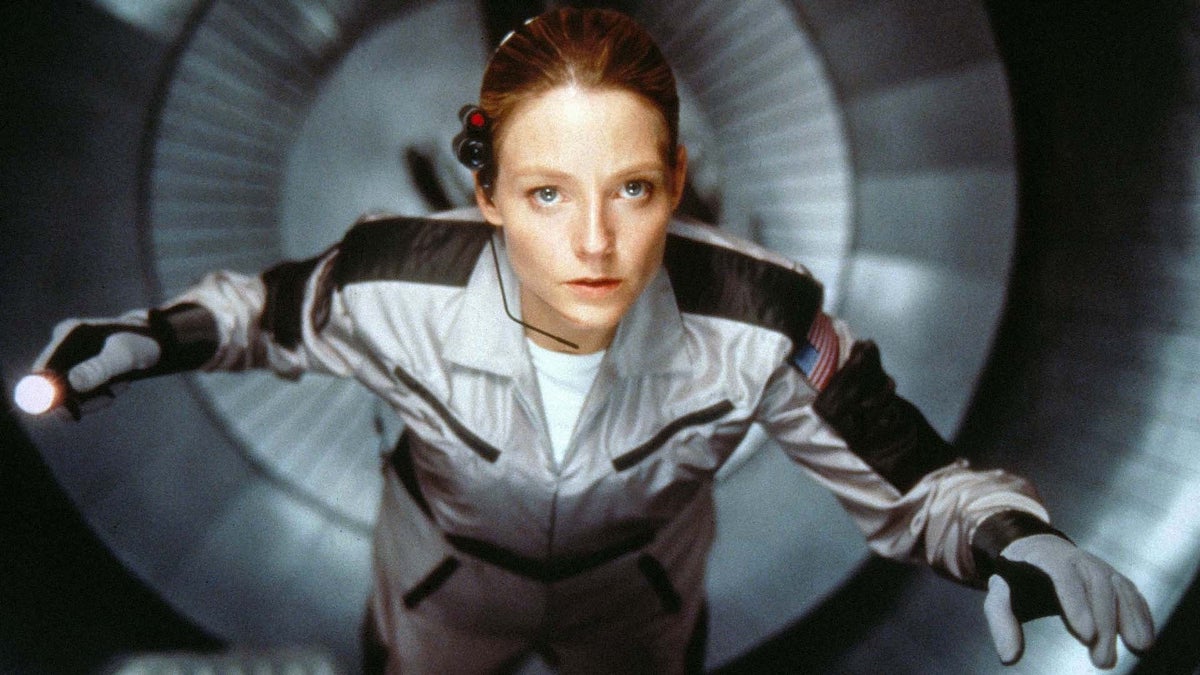
The film is thought-provoking and poetic. Its portrayal of how science, politics, and spiritual beliefs interplay in the human experience is still highly relevant. For someone raised on Star Trek, I loved this movie and still do! It offers a wide perspective that’s positive and inviting, especially in our current troubled times. As more exoplanets are identified and studied for their potential ‘goldilocks’ conditions for life (hard to believe that the first was only discovered in 1995, two years before Contact was released), as ‘truth’ for politicians and media seems to be ‘what you can get away with’, and we encounter new scientific discoveries, this film offers a refreshing and open-hearted examination of important themes. A chance of a higher perspective for humanity to tackle its problems and continue to explore the stars.
The late great Stephen Hawking thought first contact with intelligent aliens would probably lead to the extinction of humanity, but some would argue we seem to be racing towards that goal ourselves. SETI’s Jill Tanser offered a more hopeful view, that any technologically advanced intelligence would be beyond the violence and colonisation mindset (more like Star Trek’s Vulcans).
It’s chilling to think that Hitler’s opening of the 1936 Berlin Olympics is the strongest and earliest analogue signal Earth sent out far into the universe, and more chilling to think that as our world turns digital the ‘analogue’ footprint of human civilisation in the universe, which is used in Contact, will cease—although we still send out microwaves and other identifiers.
Sagan himself was an optimist about first contact. He was key in creating the ‘golden record’ about human civilisation which was sent out with NASA’s Voyager space probe in 1979 and included his six-year-old son’s greeting “Hello from the children of Planet Earth.: Watching Contact is a glimpse of his hopeful and positive attitude towards a possible future, and I recommend the ride.
USA | 1997 | 150 MINUTES | 2.39:1 | COLOUR | ENGLISH

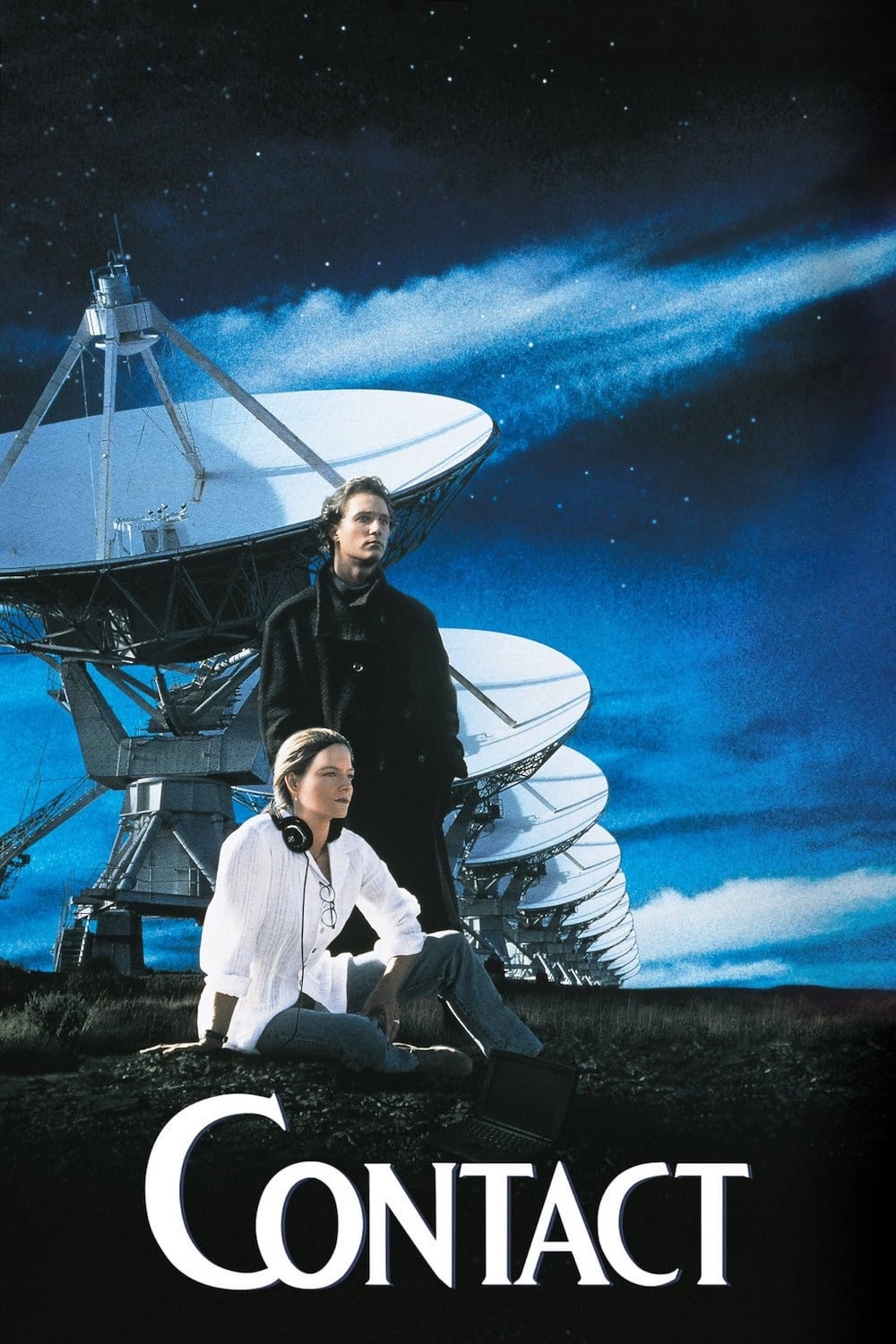
director: Robert Zemeckis.
writers: James V. Hart & Michael Goldenberg (story by Carl Sagan & Ann Drygan; based on the novel by Carl Saga).
starring: Jodie Foster, Matthew McConaughey, James Woods, John Hurt, Tom Skerritt & Angela Bassett.
